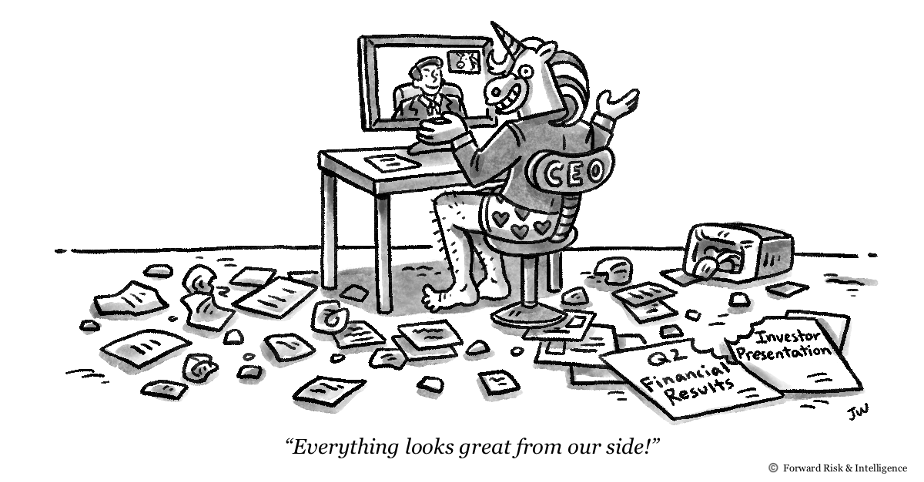M&A Amidst COVID-19: Revisiting Diligence Best Practices
June 10, 2020
By Forward Risk Team
Private equity firms executing founder and management buyouts have always faced a certain element of investing in the dark, relying on a time-constrained number of management meetings and site visits to round out their diligence process. To address many of the inherent information gaps that remain even after the on-site process, background checks through the public record have been a key part of the answer.
However, how do buyers make a deal with someone whom they have never met in person?
With COVID-19 curtailing our ability to travel, it has become even more difficult for private equity buyers to trust that the information provided by management is accurate, complete, and truthful. In the age of Zoom meetings, the challenges facing deal teams in obtaining the full picture on a company’s human capital, operations, and culture have become more pronounced than ever.
Remote meetings challenge a buyer’s instincts as to whether the person on the screen is the ideal business partner for the next five years. Also, remote sessions make it nearly impossible for buyers to get a genuine read on the dynamics of the company, especially the flow of communication, the level of collaboration, and the design and execution of strategy. Thus, at a time when buyers cannot conduct their on-site process, a successful due diligence review requires revisiting other core elements in a robust, best practice diligence methodology.
Think Outside the Box
In terms of background checks, this means not just looking for red flags and checking more boxes, but taking a strategic, analytical look through open source information to get a better read on management and what they bring to the table. With a trained eye, and not limiting thinking via checklists, patterns are identified that offer invaluable insight on a management’s track record, character, and fitness to execute an investment thesis. These findings can help fill the information void from not meeting face-to-face.
Insight Beyond the Desktop
Although COVID-19 has forced buyers to limit in-person management meetings and site visits, private due diligence firms also offer another solution in addition to public records to address the resulting loss of key insights. That solution is back channel references, because the old refrain that a company’s greatest assets are its people holds true. Yet, the most untapped sources of information are the employees who have left the company, who were hired by a competitor, who quit, or who left the industry. These individuals speak more freely, and often with more objectivity and nuanced perspectives than current employees.
Although private equity buyers have always acknowledged the value that back channel references can have, the remote conditions under which deals are currently being conducted necessitate that this exercise becomes a staple of the review process.
In our experience, people have always been willing to share their experiences and insight. Private equity firms should not underestimate the power of the question “What would you do if this was your company?” Barbara, the previous human resources manager, has plenty to say on the matter. As does Janine, the former head of sales, and John, the former accountant. And Mrs. Giles, the former executive assistant, can go on for days about the CEO.
Investments hinge on the strength of management, their strategy, human capital, and culture, as much as on the company’s product, service, and market opportunity. Beyond diving deeper into the public record, back channel references have been the most effective means of gaining additional visibility under the hood. Back channel references can be used not just for identifying red flags, but for detecting skill gaps, immature controls, and whether the company needs to dedicate more resources to a particular sales channel or to divest a non-core distraction.
As we navigate the post COVID-19 realities of M&A, the firms that incorporate the best practices in due diligence will gain a definitive information edge over their peers.
